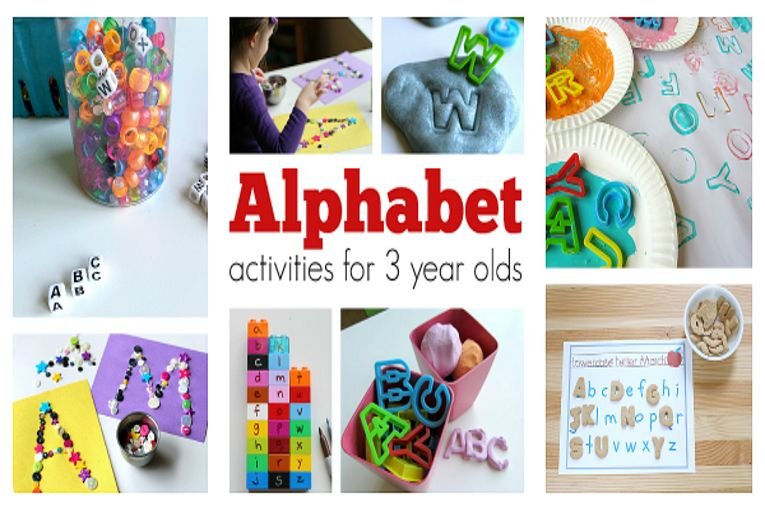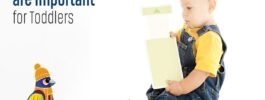Introduction
Teaching the alphabet to young children is a crucial step in their early literacy development. While traditional methods like flashcards and worksheets are effective, incorporating DIY activities can make learning the alphabet more engaging and fun for kids. By using hands-on and creative approaches, parents and educators can help children grasp the alphabet in an interactive and memorable way.
Alphabet Sensory Bins
Sensory bins are a fantastic way to engage children in hands-on learning experiences. Create an alphabet sensory bin by filling a container with items that represent each letter of the alphabet. For example, you can use small toys, objects, or even food items that start with different letters. Encourage children to dig through the bin, identify the items, and match them to the corresponding letters. This activity not only reinforces letter recognition but also enhances sensory exploration and fine motor skills.
Letter Hunt Scavenger Hunt
Turn learning the alphabet into an exciting scavenger hunt! Create a list of letters or words for children to find around the house or outdoors. You can write the letters on index cards or use alphabet magnets for younger children. As they find each letter, have them say the letter name aloud or come up with words that start with that letter. This activity not only reinforces letter recognition but also promotes physical activity and critical thinking skills.
Alphabet Art Collage
Get creative with an alphabet art collage activity! Provide children with magazines, newspapers, stickers, and other art supplies to create collages representing each letter of the alphabet. Encourage them to search for pictures or words that correspond to each letter and glue them onto a large poster board. This activity not only reinforces letter recognition but also fosters creativity, visual literacy, and fine motor skills.
Alphabet Playdough Mats
Playdough is a versatile and engaging tool for teaching the alphabet. Create alphabet playdough mats by printing out large letters on cardstock or laminated paper. Encourage children to roll out playdough snakes and shape them to form each letter on the mats. This hands-on activity helps children practice letter formation, strengthen hand muscles, and improve fine motor skills. You can also add a sensory element by incorporating scented playdough or glitter for extra fun.
Alphabet Bingo Game
Put a twist on the classic game of Bingo by creating an alphabet version! Make Bingo cards with letters instead of numbers and call out letter names or sounds during the game. Children can mark the letters on their cards with counters or stickers as they are called out. This game not only reinforces letter recognition but also improves listening skills, concentration, and social interaction. You can customize the game by using themed Bingo cards based on children’s interests.
Alphabet Letter Matching Puzzles
Engage children in a challenging yet rewarding activity with alphabet letter matching puzzles. Create puzzle pieces with uppercase letters on one piece and corresponding lowercase letters on another piece. Children can match the uppercase and lowercase letters to complete the puzzle. This activity helps reinforce letter recognition, letter-sound correspondence, and cognitive skills. You can also create themed puzzles with pictures that start with each letter for added interest.
Alphabet Story Stones
Enhance children’s storytelling and language skills with alphabet story stones. Paint or draw letters of the alphabet on smooth stones and place them in a bag or basket. Encourage children to draw a few stones from the bag and use the letters to create words or sentences in a story. This activity promotes creativity, language development, and imaginative play. You can also add illustrations to the stones to spark storytelling inspiration.
Alphabet Letter Formation Practice
Help children master letter formation with hands-on practice activities. Provide them with different materials such as sand, salt, shaving cream, or finger paint on a tray. Children can use their fingers or a small tool to trace and write letters in the material. This tactile experience helps children learn the correct strokes for forming each letter while engaging multiple senses. You can also incorporate music or rhymes to make letter formation practice more enjoyable and memorable.
Alphabet Memory Matching Game
Strengthen children’s memory and letter recognition skills with an alphabet memory matching game. Create pairs of cards with uppercase and lowercase letters or letters and corresponding pictures. Place the cards face down on a table and have children take turns flipping them over to find matching pairs. This game not only improves memory and concentration but also reinforces letter-sound relationships and vocabulary. You can adjust the difficulty level by increasing the number of cards or adding more challenging elements.
Alphabet Letter Sorting Activity
Encourage children to practice sorting and categorizing letters with an alphabet letter sorting activity. Provide them with a variety of letter cards or foam letters and sorting trays labeled with categories such as vowels and consonants, uppercase and lowercase letters, or letters based on their shape. Children can sort the letters into the correct categories and discuss their reasoning behind each classification. This activity promotes critical thinking, letter recognition, and language awareness.







